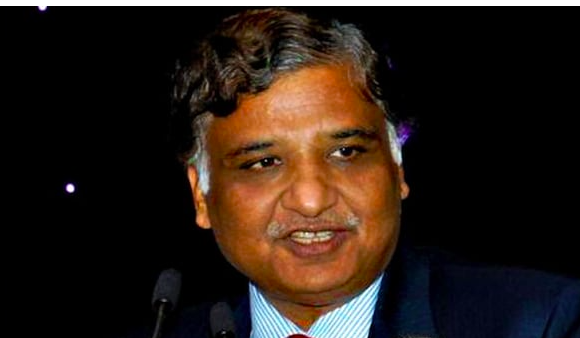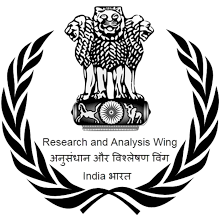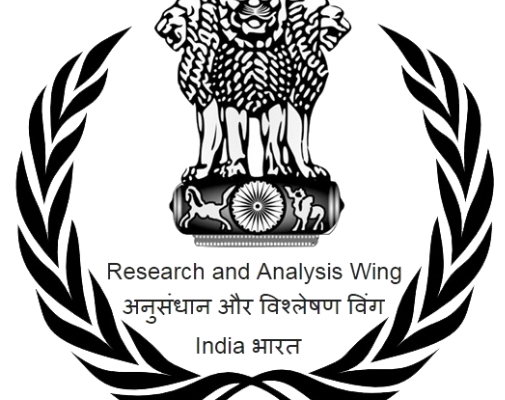HAPPENING NOW:
Inside the Discord Leak: U.S. Air Force Loves War Gamers Like Teixeira
British Intelligence Privately Says Israel Has Nuclear Weapons But Won’t Admit it Publicly
Mexican President Accuses Pentagon of Spying, Vows to Restrict Military Information
Daniel Ellsberg Week Honors Pentagon Whistleblower
How Twitter Became a Propaganda Tool of U.S. Central Command
Interview With the Father of a Palestinian Fighter Assassinated by Israeli Special Forces
Chinese Police Station in New York Is Part of a Vast Influence Operation
Catch-22 at Guantanamo, or How Due Process Got Undone
Wagner Group Leader Calls for End to Russia’s ‘Special Military Operation’
Once Ridiculed, the ‘October Surprise’ Deal Between Reagan and Iran Is Now Confirmed
Two Senators Allege ‘Secret’ CIA spying on Unwitting Americans
UK Spy Agency Says AI Chatbots Pose a Security Threat
How Aerial Surveillance Has Evolved Over the Past 200 Years
Wagner Mercenary Chief Says He Ran Russian Information War
Iranians Outraged After Shah-Era Secret-Police Official Attends U.S. Rally
Israeli-led Disinformation Team Meddled in Dozens of Elections
Director of National Intelligence Barred From Reporting on Domestic Extremists in U.S. Armed Forces
Iranian Intelligence Official Says China in Line to Buy Tehran’s Drones
Former Mossad Chief Urges Compromise on Judicial Shakeup
India’s Research and Analysis Wing (RAW)
Introduction
[In Hindi: भारत-की-अनुसंधान-और-विश्ल/]
The Research and Analysis Wing (RAW) is responsible for intelligence-gathering, counterproliferation, counterterrorism, nuclear security, and advising policymakers.
While RAW, established in 1968, has deployed gentlemen professionals who have achieved amazing successes from Kashmir to Sikkim, the organization has also had spectacular failures, including the assassination of a Prime Minister. RAW is an agency now looking to live down its failures and play up new successes under the government of nationalist President Narendra Modi.
Origins
After India achieved independence in 1948, the Intelligence Bureau (IB) was responsible for all internal and external intelligence activities. The IB, however, was not equipped to handle the demands of both missions. This became apparent in 1962 when India’s lack of foreign intelligence collection against China resulted in India’s defeat during the 1962 Sino-Indian border war.
Three years later, the Indo-Pakistani war reinforced India’s need for a separate and distinct external intelligence organization. RAW was the result, headed by a legendary spymaster named Rameshwar Kao (who will soon to be depicted in an Indian cable TV series.)
Organization
RAW is responsible for utilizing technical espionage to monitor political and military changes in neighboring countries, especially China and Pakistan. The agency provides security services for India’s nuclear program. RAW also collects intelligence about the capabilities, limitations, leadership, and organization of known insurgent groups that operate in neighboring countries and project influence into India.
RAW has three associated enterprises: An Aerial Reconnaissance Centre responsible for collection of high quality overhead imagery of activities and installations in neighboring countries; a paramilitary organization called Special Frontier Force; and the National Technical Facilities Organization, which is believed to be responsible for technological espionage.
The activities and functions of RAW are confidential, according to the Council on Foreign Relations. In 2000 the Federation of American Scientists estimated that the organization had 8,000-10,000 agents and an estimated budget of $145 million.
Enemies
While the establishment of RAW was primarily geared towards managing the influence of China, the agency has pivoted in the 21st century to focus on Pakistan and its Inter-Service Intelligence (ISI). The tense situation in the Muslim-majority Indian state of Kashmir on the border of Pakistan is now the priority for Indian intelligence.
The conflict with Pakistan has a long history. In the early 1970s the Pakistani army launched a military crackdown in what was then East Pakistan (now the independent country of Bangladesh). RAW was instrumental in the creation of the Bangladeshi guerrilla organization, Mukti Bahini.
RAW chief Kao supplied the group with information, training and heavy ammunition. The Special Frontier Force, the paramilitary wing of RAW, actively participated in the war, which resulted with the creation of Bangladesh, a victory for India.
In the mid-1980s, RAW set up a covert group, Counterintelligence Team-X (CIT-X), directed at Pakistan. The agency used the services of cross-border traffickers to ferry weapons and funds across the border and claimed success in discouraging the ISI’s activities in Punjab.
Defeats
Public setbacks have plagued RAW over the years.
In 1984 an Army-led operation known as Operation Blue Star launched an attack on the Golden Temple, a landmark occupied by Sikh separatists. Eighty-three soldiers and 492 civilians were killed, and the temple nearly destroyed. Five months later, two Sikh bodyguards retaliated by assassinating Prime Minister Indira Gandhi. The intelligence failures surrounding Blue Star and Gandhi’s assassination were black marks from which RAW barely recovered.
In 1999, RAW was heavily criticized following the Pakistani incursions at Kargil. Critics accused RAW of failing to provide intelligence that could have prevented the ensuing ten-week conflict that brought India and Pakistan to the brink of a full-scale war.
The 2008 terror attack on Mumbai left 174 people dead and further blemished RAW’s reputation. The agency, demoralized by years of poor management, lacked the resources of a modern intelligence service. Decades of nepotism within the organization led critics to refer to RAW as the “Relatives and Associates Wing.”
RAW regained a measure of media prestige with a February 2019 airstrike on a terror camp in the Pakistani town of Balakot. The camp was run by Jaish-e-Mohammed, the Islamist movement which claimed responsibility for a suicide attack in Kashmir that killed 40 Indian troopers. The Indians claimed the attack killed hundreds of militants, which Pakistan disputed. President Modi then appointed the RAW operations chief Samant Goel to serve as chief of the organization.
Rule of Law
RAW’s legal status in the Indian government is unusual, in that it is not formally considered an “agency,” but a “wing” of the Cabinet Secretariat. As an agency, RAW would have to answer to the Parliament. As a wing, RAW is not accountable to the parliament on any issue.
RAW has consistently faced questions about the lack of transparency pertaining to its budget. Due to the sensitive nature of their mission, agency leaders are exempt from the Right to Information Act, which would require public disclosure of their use of funds.
Declassification of past operations is uncommon. Unlike the Central Bureau of Investigation (CBI), the domestic security agency of India, RAW is not well-known among the general public, although that is changing with increased media visibility including a primetime spy drama, Raazi, about RAW agents in Pakistan.
With questions about RAW’s analytical capability and failure to coordinate with India’s domestic intelligence organizations, there is growing pressure for RAW to provide information about how their budget is used.
Resources
- RAW: India’s External Intelligence Agency (Council on Foreign Relations)
- Mission RAW (CIA/Studies in Intelligence)









